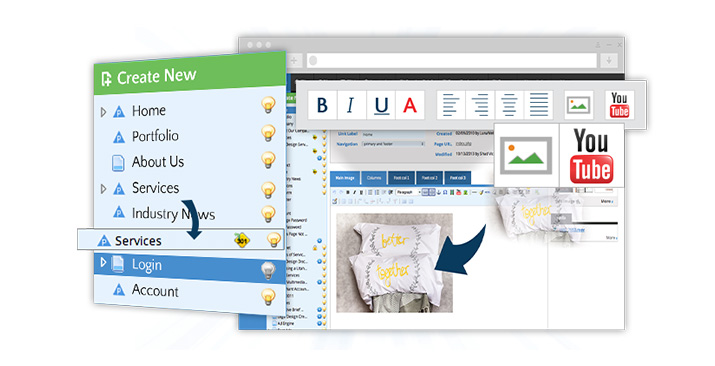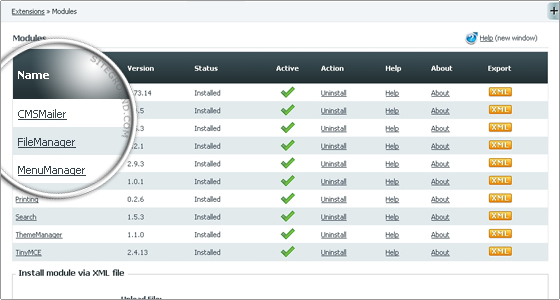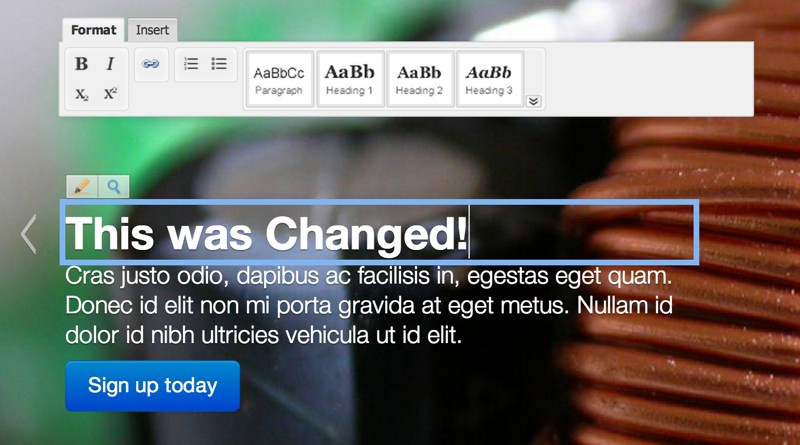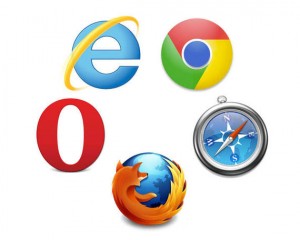Selecting a CMS That Supports Your Business
Reviewing different content management systems can be a difficult task, not because of the technical jargon, but simply because there are so many packages to choose from. However with a planned approach to your evaluation, things can be easier and less frustrating. This article will provide advice on the things you should consider when deciding on what CMS to use for your web site.
Easy to use

A modern CMS should provide an administration interface that’s easy to look at, isn’t overly complicated to use, and provides simple and straightforward options for all the administrative tasks required to manage content for a web site.
Your staff will be spending a lot of time within the administration interface and if they find it difficult to learn then any productivity gains you hoped for will soon disappear. A well thought out interface means that managing your online content will be both productive and enjoyable.
When testing a CMS review the administration area to see if all the common tasks of creating posts, pages, users, navigation and media management are no more than one or two clicks away. If you have to navigate your way through multiple menu options just to perform a simple task then this may indicated a poorly thought out product that could be difficult to use.
Customisation
 When reviewing a CMS, make sure that your not locked into the use of their design templates. Many CMS solutions allow you to customise your own design without any restrictions. If your CMS forces you to work from a pre-built template that can’t be altered in any way, then you will be unable to implement your own creative design and branding choices making your web site will look like everyone else’s.
When reviewing a CMS, make sure that your not locked into the use of their design templates. Many CMS solutions allow you to customise your own design without any restrictions. If your CMS forces you to work from a pre-built template that can’t be altered in any way, then you will be unable to implement your own creative design and branding choices making your web site will look like everyone else’s.
CMS’s that allow for customised templates are WordPress, Drupal and Joomla just to name a few; these content management systems actively promote their ability to be easily modified.
If you are not ready to create your own custom template then many CMS’s will allow you to purchase themes created by other designers. These themes usually come with their set of extensive customisation options allowing you to select your own choice of colours, layout style and company logo. Many of these themes are free, however some of the best offerings come as a commercial package with a one-off licence.
A CMS that has an extensive theme library is an important consideration as this will allow you to change the site’s appearance easily without the added expense of hiring a web developer. Larger businesses may however still elect to have a tailored solution that meets their own branding guidelines.
Plugins and Modules

A good CMS will allow you to add additional functionality or features by letting you extend the default configuration with plugins or extensions. These plugins/extensions/modules (the name varies between different CMS platforms) allow your web site to be extended upon in ways that are not possible with just the CMS on its own.
When short-listing a CMS look for one with a powerful Application Programming Interface (API) in case you, or your web developer, wish to write your own plugins. Make sure that your choice of CMS already has a huge list of plugins. Though you might not need them straight away, it’s important that this is available to you at a later point.
WYSIWYG Support

Make sure that you select a CMS where you won’t need to have extensive programming abilities to publish and maintain your site. There are a wide selection of CMS’s that have WYSIWYG editors, letting you edit content without the need for code. Having to edit text through HTML markup can be time consuming and takes you away from the more important tasks of managing and building your web site.
More complex sites however will require a CMS that will let you type in some code, and even edit PHP, HTML and CSS files without the need for a third party source code editor.
Security
 Security for your site is extremely important and must be in place in order to protect your web site and its content. Many CMS’s allow you to install specific plugins and customise file permissions in order to increase security levels.
Security for your site is extremely important and must be in place in order to protect your web site and its content. Many CMS’s allow you to install specific plugins and customise file permissions in order to increase security levels.
Make sure you select a CMS that offers modules to protect the integrity of your site. You can also protect your site by selecting a CMS that allows you to easily assign a different UserID and password to each user. This will allow you view and control what each account holder has access to.
For more information be sure to read our security guides for WordPress and Joomla.
Documentation and Support 
Learning a new software package or system can be a very frustrating experience particularly when you don’t have any reference material to take advantage of. Clearly written, up to date documentation is important to avoid any implementation issues with your new CMS.
You should first be reviewing the main documentation provided by the creator of the CMS. Popular CMS systems usually have comprehensive online manuals as well as knowledge base and FAQ sections providing solutions to common problems.
Another issue to consider is the amount of support from other uses of the CMS. A well maintained, popular CMS will have a large active community behind it providing support along with consulting and web development services. This will allow you to easily locate people who can help you to develop and extend your web site and provide support when required.
Web Standards
 Web standards are a set of guidelines and best practices carefully designed to deliver the greatest benefits to the greatest number of web users while ensuring the long-term viability of any document published on the Web.
Web standards are a set of guidelines and best practices carefully designed to deliver the greatest benefits to the greatest number of web users while ensuring the long-term viability of any document published on the Web.
Content Management Systems that publish documents with these standards will help to simplify and lower the cost of production, while delivering sites that are accessible to more people and more types of Internet devices.
Using a web standards compliant CMS will provide the following benefits:
- Create a more consistent look and feel across the entire site
- Improve user experience
- Improve search engine optimization without costs
- Ensure your web site is more extensible and interoperable with future products
- Reduce costs of maintenance and site operations
Look for content management systems that promote the use of web standards, and those that put it at the forefront of their development and design philosophy.
All of these CMS systems have their drawbacks and shortcomings. Selecting the right one means making choices about what is the best fit your business model and constraints. But it’s equally important to know the drawbacks of each CMS system. A great CMS platform will provide many advantages but you’ll always get some problems in return. If you know about these in advance instead of ignoring them, you can live with these issues mitigate them when developing your web site.

